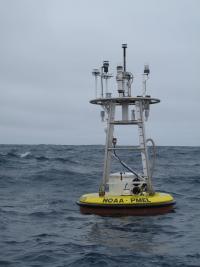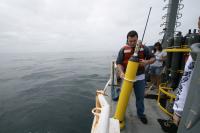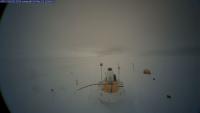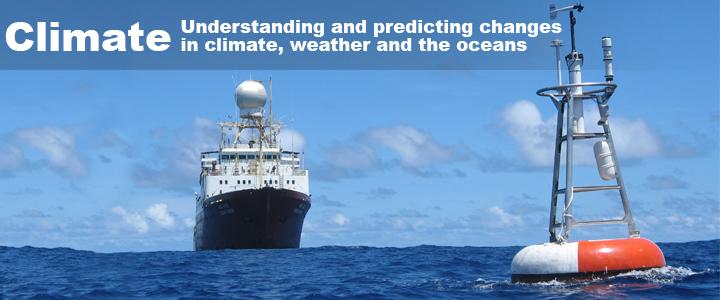Climate-Weather Research
Climate-weather research at PMEL is undertaken to support NOAA’s mission to understand and predict changes in climate, weather, and the oceans. Our society is affected by recurring patterns of climate variability, by more secular global trends in ocean temperature and carbon, by as-yet poorly understood aspects of the global ocean circulations, and by the connections between the open ocean and our coastal oceans.
Climate-Weather Research Activities
Global Tropical Moored Buoy Array – The Global Tropical Moored Buoy array is a multi-national effort to provide data in real-time for climate-weather research and forecasting. Major components include the TAO/TRITON array in the Pacific, PIRATA in the Atlantic, and RAMA in the Indian Ocean.
Ocean Climate Stations – A project that deploys moored buoys to make continuous measurements of the atmosphere and ocean. These observations are used as ground truth for satellite and numerical weather prediction models, and by scientists to enhance our understanding of ocean uptake of carbon, ocean acidification, weather, and climate.
Global Observations of Biogeochemistry and Ocean Physics – The group monitors and studies the distribution and variations in ocean temperature, salinity, oxygen, carbon, nutrients, and currents and their relations to climate, ocean dynamics, and ecosystems, using data from the global array of Argo floats, deep hydrographic profiles along oceanographic transects occupied by GO-SHIP, and other sources.
Climate-Weather Interface - Research focus lies in evaluation of the current ocean observing systems and their effectiveness for monitoring patterns of significant global climate variability and tropical air-sea interaction, with the goals of assisting the prediction of subseasonal-to-seasonal (S2S) weather and climate extreme events. Research activities also include investigations on how weather and climate are connected through subseasonal variability and how observations should be made to benefit S2S prediction.
Arctic Climate Dynamics – Research focus conducts observations and evaluates models of Arctic sea ice to document and predict climate change impacts on Arctic marine ecosystems.
Ocean Carbon – This group focuses research efforts on understanding the ocean’s role in uptake and redistribution of natural and anthropogenic CO2 from the atmosphere. The group generates high-quality carbon data, quantified global ocean carbon uptake and storage from repeat hydrography and VOX cruises, and acquired in situ measurements from moorings.
Pacific Western Boundary Currents - This project began exploratory missions in the Solomon Sea with ocean gliders in 2007 to observe fluctuations of the equatorward western boundary currents and how they contribute to the El Nino Southern Oscillation (ENSO). The ENSO signal in this western boundary current is seen to be a first-order contribution to the equatorial mass and heat balance.
Atmospheric Chemistry - Using past and present PMEL aerosol measurements, the Atmospheric Chemistry group is dedicated to international field campaigns and long term measurements to determine the impact of atmospheric aerosol particles on climate and air quality.

Ocean Climate Station PAPA in the Gulf of Alaska.

An Argo float before being deployed off the side of a ship.

A photo from the 2014 North Pole camera that tracks snow cover, weather conditions, and the status of the instrumentation shown.



